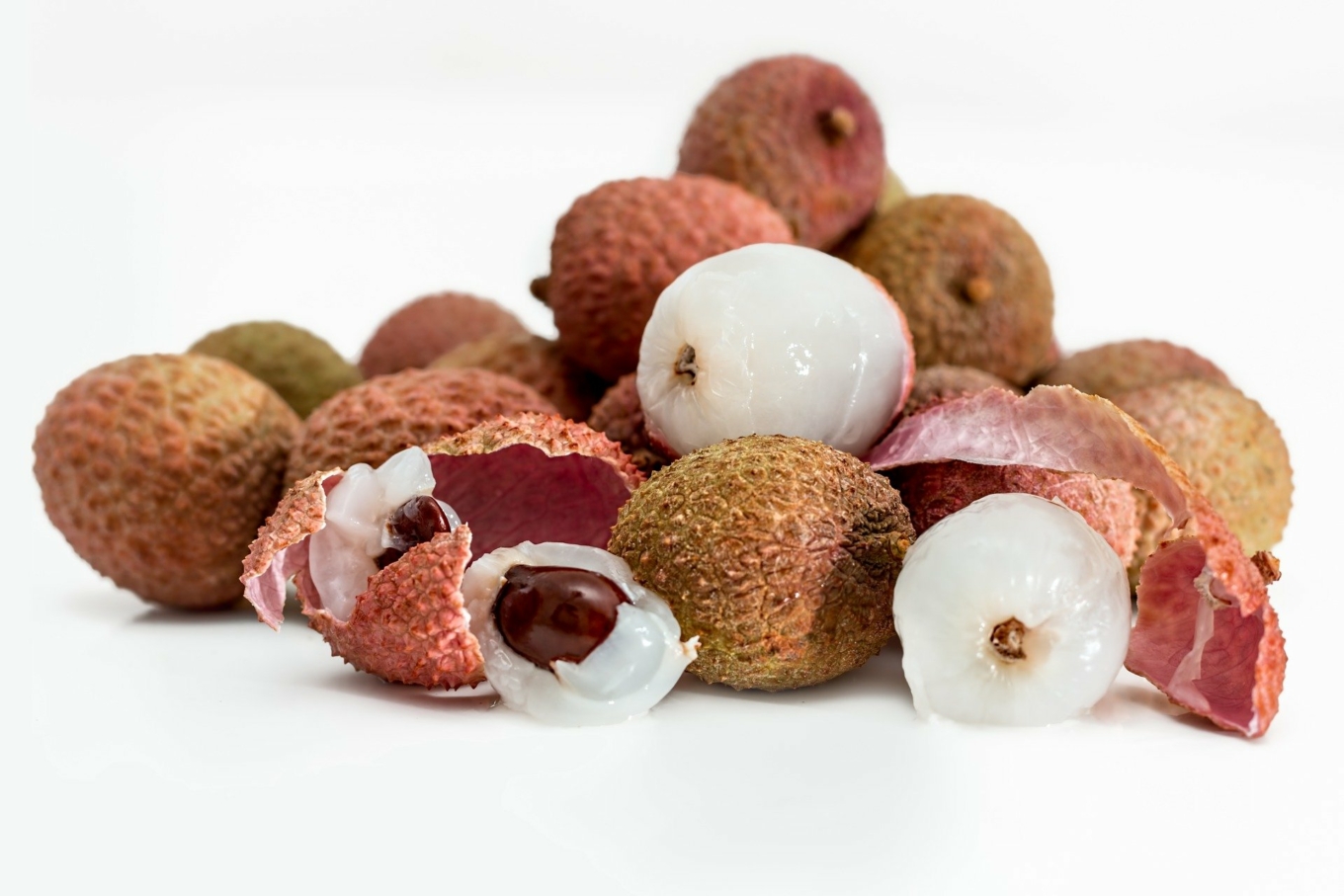Lychee is, no doubt, a versatile fruit that can be leveraged into sweet and savory dishes, sides, and drinks. Read on to learn more about lychee and its interesting culinary uses in order to savor all its tropical goodness.
What is Lychee?
Lychee is a fleshy tropical fruit from the genus Litchi, which is native to the Fujian and Guangdong provinces of China. Lychee trees grow in a dense umbrella pattern, bearing multiple fleshy fruits packed inside a coarse, pinkish-red rind. The shape of lychee fruit may vary from circular to heart-shaped, and grows up to 5 cm in length and 4 cm in width. Its cultivation requires a tropical climate that is frost-free. Intense summers and rainfalls are excellent for a high lychee yield.

History of Lychee
Documented records show the origin of Lychee in Southern China during the 11th Century. However, according to unofficial records, lychee used to be a popular offering in China as far back as the 1st century. It was specially provided to the Imperial Court by fast horse services from Guangdong. Lychee was also the favorite fruit of Emperor Li Longji from the Tang dynasty of China. The emperor had this fruit delivered at high expense to the nation. Lychee fruit was introduced to the west in 1656 by Michal Boym, a Polish Jesuit missionary to China. Even today, China remains the top producer of lychee, whereas India, Southeast Asia, Madagascar, and South Africa also cultivate lychee at a large scale.
What Does Lychee Taste Like?
The lychee fruit offers a sweet, citrusy, and aromatic taste with a rosewater undertone. While some people say it tastes like a pear others claim it to be more similar in flavor to sweet grapes. The texture of lychee fruit is fleshy, soft, and delicate, and offers a pleasant mouthfeel with the pulp popping in the mouth at each bite, much like grapes.
Health Benefits of Lychee
Lychee is known to stimulate the immune system and works as an antioxidant. Lychees are packed with Vitamin C and Vitamin B, which helps in keeping healthy skin. It’s believed that lychee can also cure cough, fever, swellings, and pain, although these claims have not been tested.
Uses of Lychee

Lychees are often used in desserts like cakes, tarts, custards, mousses, ice cream and can even be added to any salad for a citrusy-sweet punch. Thankfully, lychee pairs well with chicken, duck, prawns, and shrimps, making it easy to prepare savory dishes as well. Furthermore, this tropical fruit can be pickled or made into tempting sauces, jam, chutneys, or even wine. Try out our recipe for Lemon Herb Chicken Salad with lychee chunks for a refreshing experience. Or you can layer fresh or canned lychee slices with pistachio ice cream and whipped cream for a quick yet delicious dessert.
For a bracing and nutritious smoothie, you can combine chopped lychee with yogurt, honey, and fresh lime. You can also create a hearty lychee sauce using our fruit sauces recipe that can be topped over ice creams, pancakes, or any dessert of your choice. Lychees can also be used to prepare beverages like lemonades, cocktails, and mocktails, while lychee martinis are simply irresistible.
Storage of Lychee
Fresh lychees don’t continue to ripen once picked and must be eaten before they turn soft, bitter, sour, or moldy. Peeled lychee can be canned or refrigerated, and turn dark brown without any taste alteration. Fresh lychee fruits can be stored for up to two weeks, whereas dried lychees, called litchi nuts, can be stored for up to a year.
Feature Image: Steve Buissinne from Pixabay



